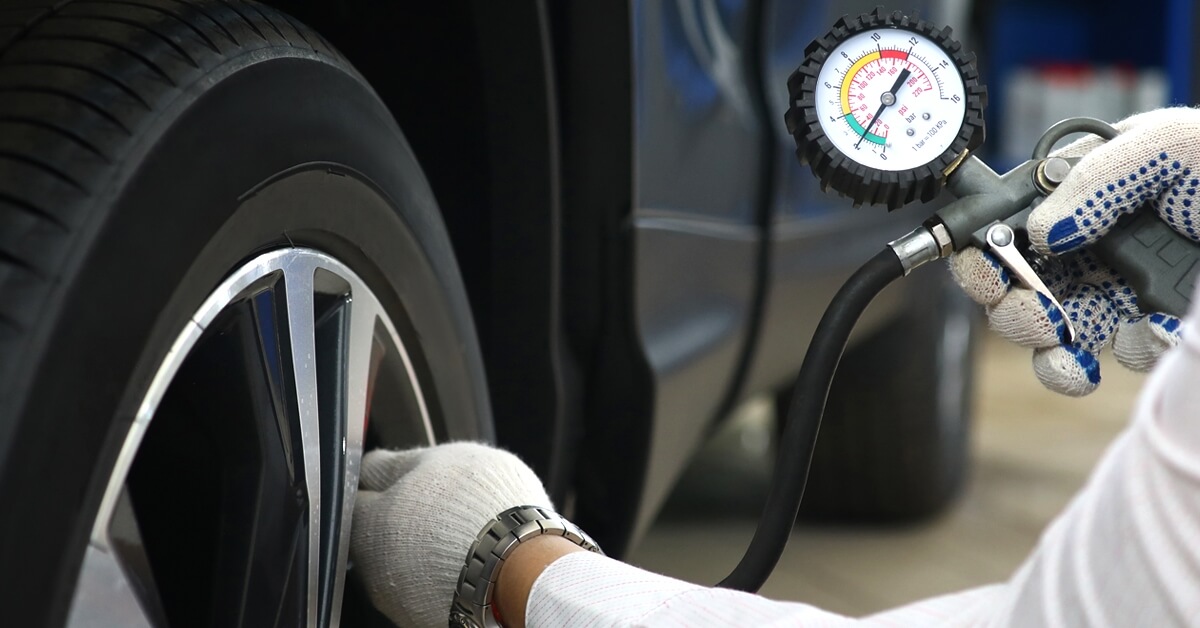What is the difference between nitrogen and air in tyres?
How effective is filling nitrogen in your car tyres?

Find your tyre
READ THE DIMENSIONS OF TYRES

Did you know most of the race cars are filled with 100% pure nitrogen instead of normal air? And now a days we even see a lot of regular cars driving around on tyres that are filled with nitrogen.
If you are hitting the roads in summer it is a good idea to make sure your vehicle’s tyre are properly inflated and road-ready. Especially with regions that experience hot temperatures, proper tyre pressure is the key to tyre safety. And some of the drivers are convinced that another trick to keep your tyres properly inflated for a longer time is to get them filled with nitrogen instead of regular air. Is this, however, true? Let’s find out.
The science of putting nitrogen in tyres
When you put air in your tyres the majority of it is made up of nitrogen. But what would happen if you put all nitrogen in your tyres?
The air you put in your tyres normally contains 78% nitrogen, 21% oxygen, and 1% additional gases and water. Hence, when you fill your tyres with normal air you are filling them mainly with nitrogen anyway. But the 21% oxygen is the trickiest part. The oxygen molecules that are present in the air are small enough to pass through the surface of the tyre and are the main reasons for a quick drop in tyre pressure in a given condition. The nitrogen molecules are bigger than oxygen and hence can’t easily escape through the rubber structure of the tyre. As a result, nitrogen filled tyres are able to maintain their pressure for a longer period of time.
Filling up tyres with nitrogen also removes another problematic element of air - water vapour. As the tyre heats up as it is used, its pressure increases. The presence of water vapour in a tyre filled with regular air makes this increase unpredictable. As heat builds up in the tyre the water vapour expands at a faster rate leaving less space in the tyre for the air. As a result, the air molecules move out of the tyre surface causing a significant decrease in pressure.
Hence, scientifically there are benefits of filling nitrogen in tyres over regular air.
Inflating tyres with Nitrogen will:
- Maintain Tyre pressure
- Increase tyre life
- Improve fuel efficiency
How much will it cost to get nitrogen in my tyres in UAE?
Filling your tyres with nitrogen will cost you around AED 20 per tyre.
Is it safe to put nitrogen in tyres?
Yes, it is completely safe to put nitrogen in your tyres. It is an inert, non-inflammable gas that is safe to be filled in tyres.
Who uses Nitrogen on Tyres?
Racing cars (IndyCar, Formula 1, Nascar), aircraft planes (commercial and military) and heavy-duty equipment).
Will I get better gas mileage?
Maintaining a correct tyre pressure at all times whether filled with air or nitrogen does ensure improved fuel efficiency.
Will nitrogen prevent tyre rot and wheel rust?
Nitrogen is a dry gas and does not contain moisture. Hence, there is less possibility for oxidation of the inner wall of the tyre. However, when a tyre, whether filled with air or nitrogen is used in normal day-to-day driving the rate at which the tread wears to its maximum usable limit is much faster as compared to the wear caused by oxidation. On the other hand, for instance, if we consider a case where the tyres are unused and stored or the vehicle is parked for a very long duration, then filling the tyres with nitrogen maybe beneficial since it does not support moisture. Hence, although nitrogen may have an advantage technically, it is difficult to demonstrate its practical benefit in case if you are using your vehicle regularly.
Where can I fill my tyres with nitrogen?
In UAE, there are several tyre shops present all over the cities which offer nitrogen inflation services. Visit the one closest to you and get your tyres inflated with the optimum pressure and also get useful advice on tyre care and safety from the tyre experts.
Summary
Nitrogen is a non-reactive, non-combustable gas. It doesn't burn or corrode which means it's safe to fill your tyres with this gas. With nitrogen, tyres can't oxidize – so you won't have to worry about the air leaking out and having to fill them up as much! One major benefit of nitrogen-filled tyres is that they can take a lot of time to lose air pressure, which means you're less likely to drive with under-inflated tyres. Nitrogen-filled tyres provide a more stable, consistent tyre pressure that is not affected by temperature change, moisture, or heat. The result of this is increased tyre life, improved fuel efficiency, and reduced risk of rapid wear from under-inflation.
For normal everyday driving however you might not see its practical benefits. However, if you are curious, then why not try it out, perhaps on the new pair of Michelin Latitude Sport tyres that you have had your eyes on.
